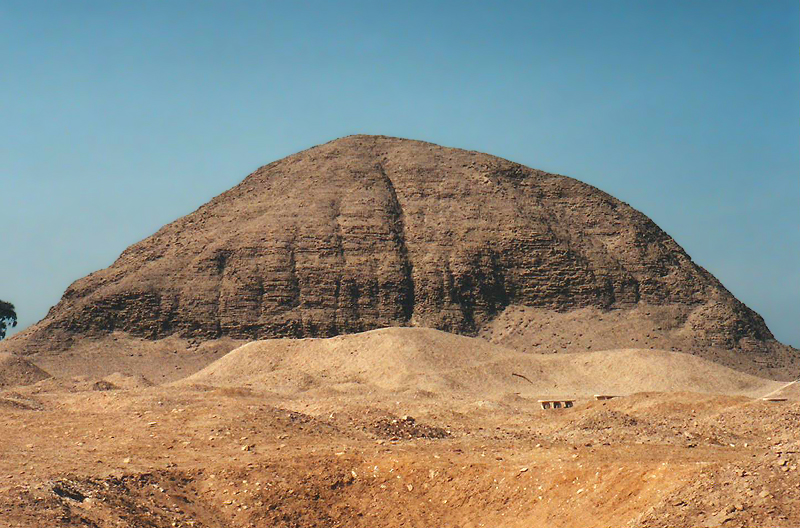“During this time trade picked up dramatically and many resources which before had been unused were now being exploited...During the entire Middle Kingdom many building projects were conducted.”
“Life was good, especially for the wealthy. We can see this from the tomb paintings, which show many daily activities, along with the marshes and wheat fields of river and farm…Middle Kingdom objects, too, such as jewelry, are among the most beautiful ever found in Egypt.” (Marston 26)
The Middle Kingdom actually started in the middle of the eleventh dynasty; so let’s back up a bit to the beginning of this line of rulers.
“11th Dynasty
· Mentuhotep I (‘Tepy-aa’)
· Intef I (Sehertawy)
· Intef II (Wahankh)
· Intef III (Nakhtnebtepnefer)
Middle Kingdom c. 2055-c.1650
· Mentuhotep II (Nebhepetre) [The First Intermediate Period came to an end and the Middle Kingdom began with Mentuhotep II, the fifth king of the eleventh dynasty. He reunited Egypt after a time of chaos and civil war. Later generations now see him as the second man to reunite Egypt.]
· Mentuhotep III (Sankhkare) [This pharaoh is interestingly missing from some of the lists of kings. His reign was positive and had many building projects, but there seems to have been a famine in the Theban region at the end of his reign. His mother was a commoner.]
· Mentuhotep IV (Nebtawyre)” (Oakes 340)
“Mentuhotep [IV] seems to have been overthrown by his own vizier, Amenemhet, who thus founded the XII Dynasty. Some ill feeling may have persisted, since Amenemhet himself was ultimately assassinated, a sort of act that was, as far as we know, rather rare in Egyptian history.”
12th Dynasty
· “Amenemhet I [“Amenemhet I set about consolidating the country in a very purposeful manner. He moved his capital north to the capital he apparently established named Amenemhet-itj-tawy...It was located south of Memphis.”]
· Sesostris I [He apparently was trained by his father on how to rule and was given specific active roles in the government, especially concerning the military. When he succeeded his father, there was “little or no disruption in the administration of the country.”]
· Amenemhet II
· Sesostris II
· Sesostris III [He “reorganized Egypt into four regions: the northern and southern halves of the Nile Valley and the eastern and western Delta.”]
· Amenemhet III
 “This mud-brick pyramid was originally covered in limestone. It is the burial place of the Middle Kingdom pharaoh Amenemhet III.”
“This mud-brick pyramid was originally covered in limestone. It is the burial place of the Middle Kingdom pharaoh Amenemhet III.”· Amenemhet IV
· Queen Sobeknefru”: the first female monarch (source)
“The 12th Dynasty re-established the pyramid building and every Pharaoh of that dynasty was buried in their own pyramid.” However, “the distinctive works of this period are a series of royal statues that reflect a subtle change in the Egyptian concept of kingship.”
13th Dynasty
· “Wegaf
· Intef IV
· Hor
· Sobekhotep II
· Khendjer
· Sobekhotep III
· Neferhotep I
· Sobekhotep IV
· Ay
· Neferhotep II” (source)
14th Dynasty
· “Nehesi
· Khatire
· Nebfaure
· Sehabre
· Meridjefare
· Sewadjkare
· Heribre
· Sankhibre
· Kanefertemre
· Neferibre
· Ankhkare” (source)
The Second Intermediate Period
Soon after this, Egypt was invaded. “For the first time, the Egyptians found themselves under foreign rule- the HYKSOS. This rule was in the fifteenth and sixteenth dynasties [as well as the seventeenth.] The rulers did not impose a foreign system of government and kept themselves to the existing Egyptian systems. They kept records in Egyptian script, using Egyptian royal titles and copying Egyptian styles on art.”
“The Hyksos dynasty took its pharaonic responsibilities seriously and encouraged buildings, the arts and crafts and literature. It was a considerable time of technical innovation. The Hyksos brought Egypt the horse harness and the war chariots and their military improvements.”
15th Dynasty
· “Sheshi
· Yakubher
· Khyan
· Apepi I
· Apepi II” (source)
16th Dynasty
· “Anather
· Yakobaam” (source)
17th Dynasty
· “Sobekemsaf

· Intef VII
· Tao I
· Tao II
· Kamose” (source) This statue is of Kamose.
“In the south, an Egyptian dynasty emerged at…[Thebes]: its founder was Rahotep. Under the Theban kings, (Ta’a and his successors,) Seqenenre and Kamose war broke between the two dynasties. The Hyksos were being forced back on the Delta. Seqenenre and Kamose died in battle, but Kamose’s successor AHMOSIS I, completed the task and drove the Hyksos out of Egypt. He became the founder of the mighty eighteenth dynasty, the first in the New Kingdom.”
Works Cited:
Marston, Elsa. The Ancient Egyptians. New York: Benchmark Books. 1996.
Oakes, Lorna and Lucia Gahlin. Ancient Egypt. New York: Barnes & Noble Publishing, Inc. 2003.






